By Roger Rittmaster
July 17, 2023
The first couple weeks in July are the peak of adult butterfly diversity in Mid-coast Maine. On a warm, sunny day, in a field full of milkweed like that found at Fernald’s Neck, one might be entertained by orange, black, white, yellow or brown butterflies.
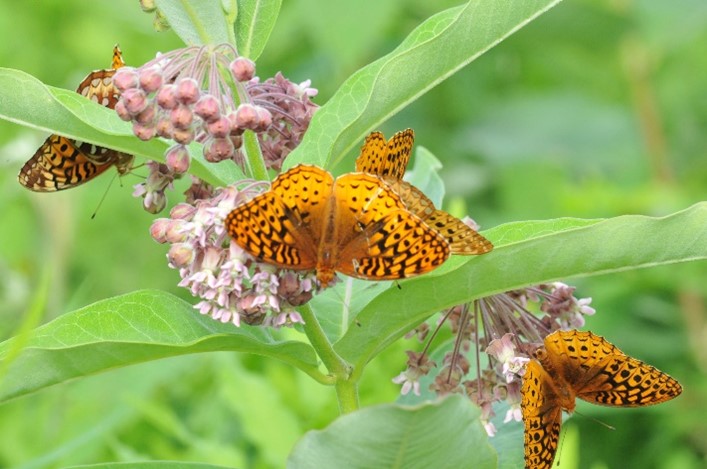
Great Spangled Fritillaries (Speyeria Cybele) nectaring on Common Milkweed.
Some may be uniformly colored, while others have attractive spots. How do butterflies make those colors and what is their purpose? Welcome to the incredible complexity of butterfly wing coloration, which I will attempt to simplify.
The short answer is that butterflies use two distinct methods of creating color in their wings. The first is to use colored pigments that they either create themselves or absorb from leaves that their caterpillars eat. Many groups of compounds have been found in butterfly wings, including melanins (black, brown, grey), ommachromes (red, orange, tan), papiliochromes (yellow, cream), and pterins (orange, white).
Sulphur butterflies such as this Orange Sulphur (Colias eurytheme) use the pigment xanthopterin to achieve the yellow and orange color in their wings.
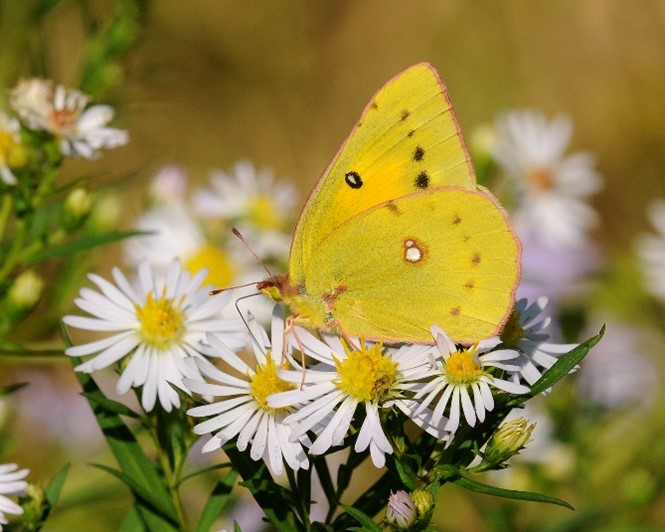
The second method that butterflies use to create color is called structural coloration. Butterfly wings are covered by scales, and the orientation of these scales and their distance from each other influence how sunlight is reflected, refracted and absorbed. The apparent wing color changes with the angle of observation, creating the iridescence seen in some butterfly wings. Furthermore, the pigment present in the scales modifies the light that is reflected back to the observer. For example, a yellow pigment in scales that would otherwise reflect a blue structural iridescence could create an iridescent green color.
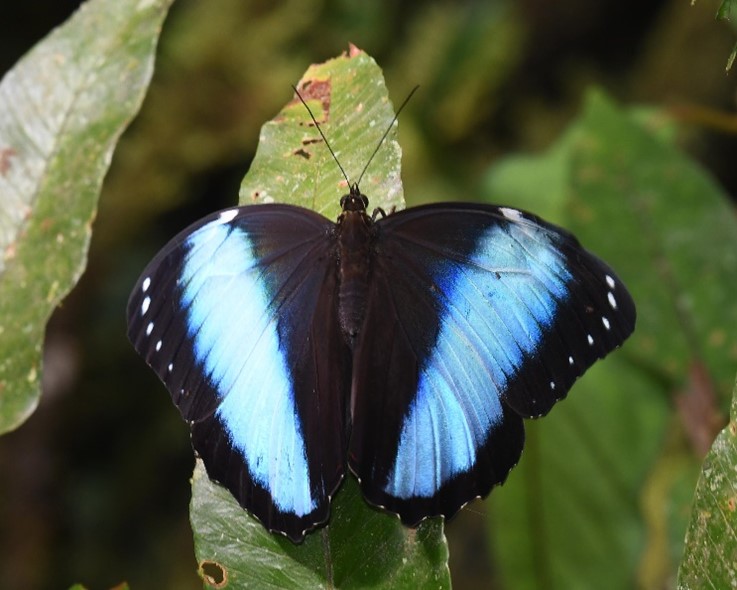
Probably the most well-known example of structural coloration is the bright blue of the Blue Morpho (Morpho helenor) as it soars through neotropical rain forests.
There are several genes that control the pattern of butterfly wing colors. Where these genes are expressed and what proteins they produce determine the pattern of background color, as well as the stripes and spots on a butterfly’s wings. By selectively modifying these genes, scientists have been able to change the color and pattern of wing color.
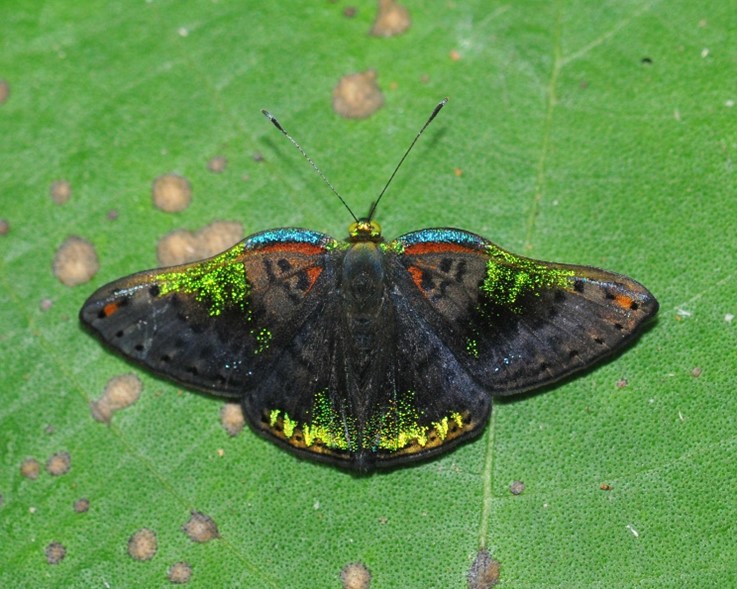
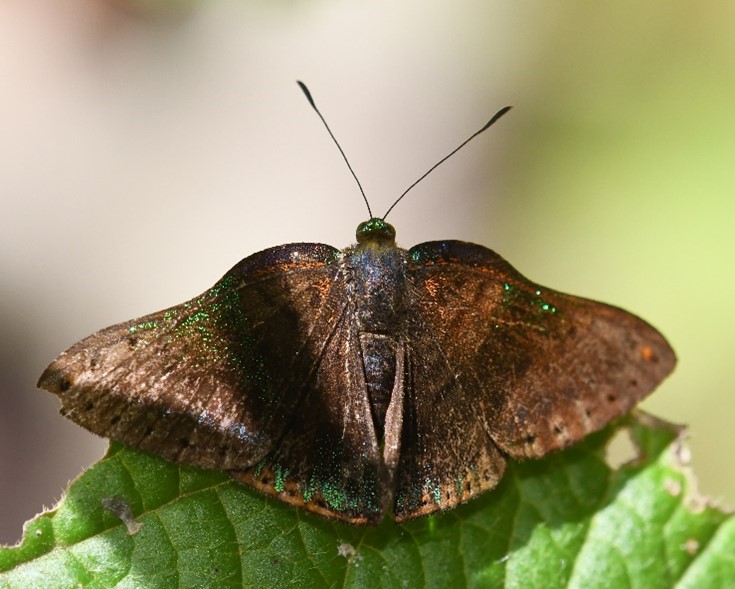
Outstanding examples of the interaction of structural and pigment coloration are shown in the Metalmarks (Rionidae), a family of mostly neotropical butterflies, exemplified by this butterfly, Caria trochilus (left). Also note the absence of much of the color when light strikes the same species from a different angle (right). One can imagine how the differential expression of genes can lead to the variation in the structure of butterfly scales and pigmentation needed to create the complex pattern of colors in this butterfly.
Why are some butterfly wings brightly colored and patterned? One thing that we can be sure of is that it’s not to please humans. In fact, the colors seen by butterflies themselves or by their predators may not be what we see. For example, humans generally cannot see ultraviolet (UV) light, in part because our lens blocks UV light from reaching and damaging the retina. UV light resides at the short (violet/blue) end of the wavelength spectrum, whereas reds are located at the opposite (long wavelength) end (with infrared beyond there), while other colors are in the middle. Some humans who have had a lens removed or are born without lenses can see UV light, which appears as a bluish/white color. Whereas humans have blue, green and red photoreceptors in their eyes, butterflies (and most insects) also have UV photoreceptors. It is likely that patterns of reflected UV light from a butterfly’s wings alter the appearance of the butterfly as seen by other butterflies and their predators. Making matters more complex, incoming UV light can be refracted into colors that we can see, creating the situation where the color of a butterfly’s wings differs in sunlight and shade where there is minimal UV light. These distinctive patterns likely help male and female butterflies to recognize individuals of their own species.
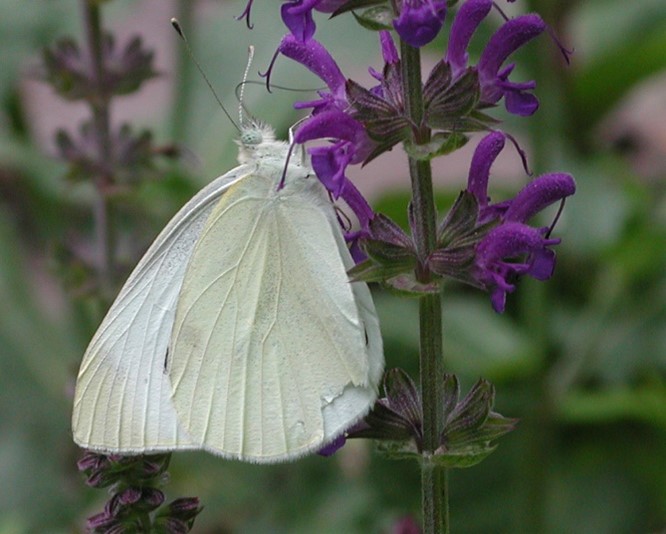
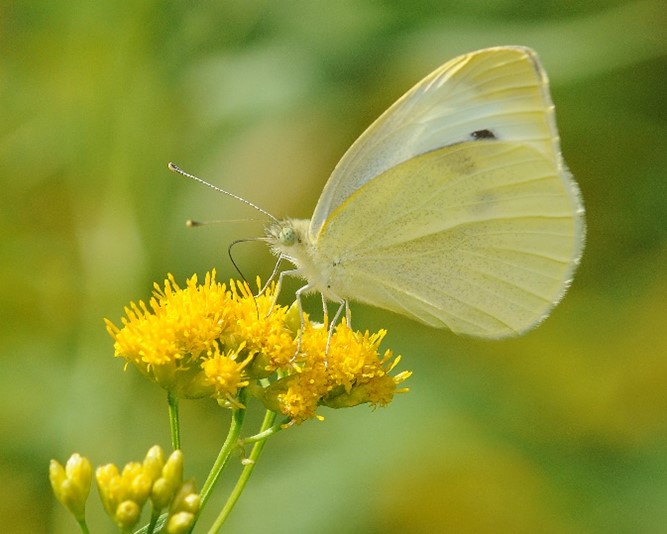
Male (left) and female (right) Cabbage White (Pieris rapae) butterflies. The male synthesizes leucopterin, which absorbs only UV light. Because humans can’t see UV light, the wings appear white. Because butterflies have UV receptors in their eyes, the absorbed UV light in leucopterin likely makes males appear colored (? bluish-white) to females and to other insects. Female Cabbage Whites appear yellow to us, most likely due to the presence of xanthopterins in their wings.
Many plants contain poisonous compounds that caterpillars consume and concentrate, making them and their adult butterflies toxic to potential predators. The bright and distinctive coloration of such butterflies advertises their toxicity. This warning pattern is called aposematic coloration. An excellent example of this is the monarch butterfly, which incorporates toxins from milkweeds. Many other butterflies mimic the monarch’s bright orange and black color pattern.
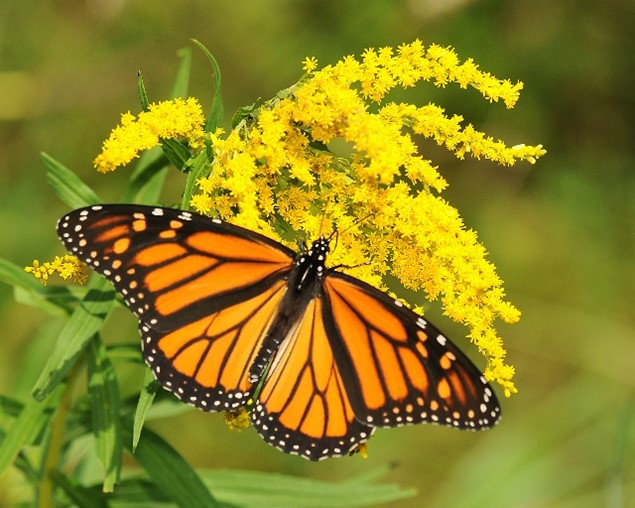
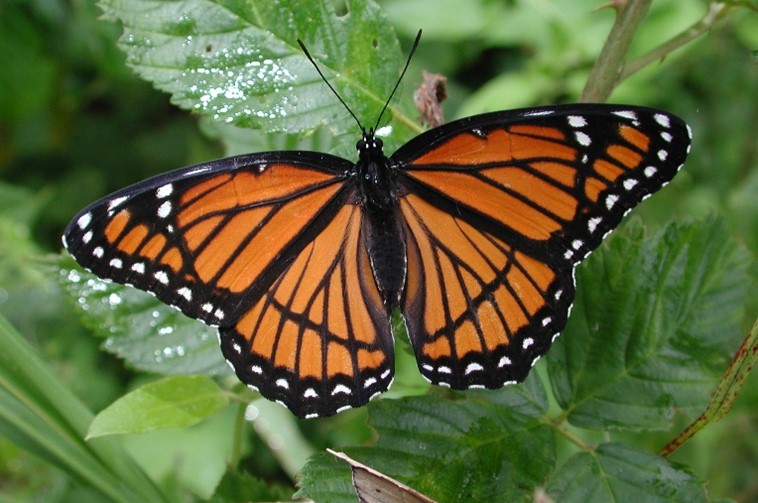
The distinctive wing pattern of the toxic Monarch (Danaus pLexippus, Left) is mimicked by the Viceroy (Liminetis archippus, right).
Some butterflies have distinctive eyespots near the tips of their wings, which likely serve to create a non-lethal target for potential predators.
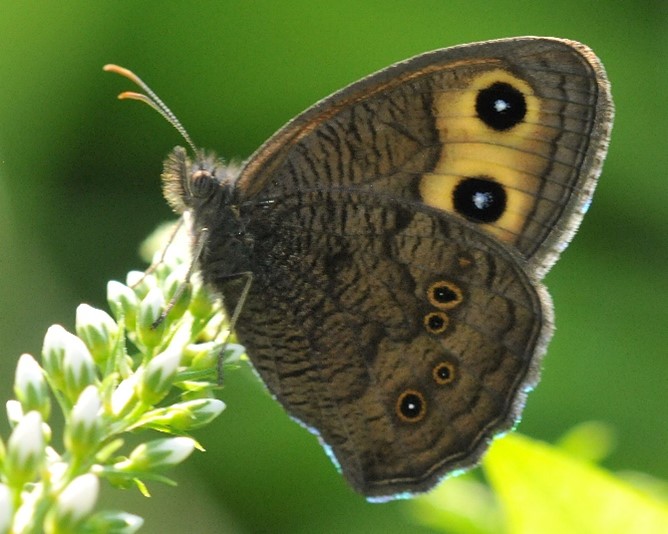
The prominent eyespots on this Common Wood Nymph (Cercyonis pegala) make it more likely that a predator will strike these eyespots rather than the camouflaged head on the left. It is likely that the black in the eyespots is caused by the pigment melanin, while the central blue dot is due to the structure of the scales at the center of the eyespots.
Hopefully, any of you who have finished this post will now see butterflies in a new light!

